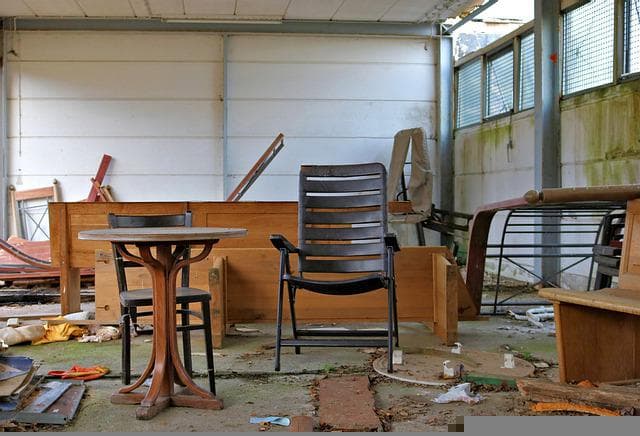It takes a concentrated and methodical strategy for commercial furniture disposal. In this post, we explore important factors to consider and highlight doable actions to guarantee a seamless and efficient procedure.
Strategic Planning
Successful furniture disposal begins with effective planning. Develop a detailed plan, considering the quantity and type of commercial furniture to be disposed of. This pragmatic approach ensures a well-organized and efficient removal process.
Local Regulations
Understand and adhere to local regulations regarding commercial furniture disposal. Practical disposal services should be well-versed in the proper furniture disposal procedures, including any environmental considerations or recycling requirements.
Assessment and Sorting
Conduct a thorough assessment of the commercial furniture to be disposed of and categorize items based on their condition. This practical sorting allows for efficient disposal, distinguishing between items suitable for recycling, donation, or landfill.
Sustainable Practices
Prioritize sustainable disposal practices, such as recycling or donating furniture, whenever possible. Practical measures like repurposing or recycling materials align with modern environmental values and minimize the impact on landfills.
Donation Opportunities
Explore donation opportunities for commercial furniture items in good condition. Practical disposal involves connecting with local charities, schools, or nonprofit organizations that may benefit from the furniture. Donating usable items contributes to community welfare and reduces unnecessary waste.
Recycling Initiatives
Engage in recycling initiatives for commercial furniture components that are recyclable. Practical disposal services should partner with recycling facilities to ensure responsible disposal of materials, contributing to environmental conservation.
Responsible Landfill Disposal
For items beyond salvage or recycling, ensure responsible landfill disposal. Practical disposal involves coordinating with authorized landfill facilities to dispose of furniture items in compliance with local regulations.
Disposal Service Selection
Choose disposal services with practical expertise in commercial furniture disposal. Consider services that offer a comprehensive range of disposal options, including recycling, donation, and landfill disposal. Practical disposal services streamline the entire process for businesses.
Moving Cost Structures
Opt for disposal services with business moving cost structures. Practical services provide clear and upfront pricing, minimizing uncertainties and allowing businesses to budget effectively for the disposal process.
Efficient Removal
Coordinate efficient removal logistics to minimize disruption. Practical disposal services should schedule pickups at convenient times for businesses, ensuring a swift and organized removal process.
Employee Involvement
Encourage employee involvement in the disposal process. Practical measures include assigning responsibilities for sorting or preparing commercial furniture items for disposal and fostering a collaborative approach to streamline the process.
Communication with Stakeholders
Maintain open lines of communication with relevant stakeholders throughout the disposal process. Practical disposal services should keep businesses informed about the progress, addressing any concerns promptly.
Compliance with Safety Protocols
Prioritize safety protocols during the disposal process. Practical services adhere to safety guidelines to ensure the well-being of both disposal team members and office personnel.
Documentation
Maintain documentation of the disposal process for record-keeping and compliance purposes. Practical disposal services provide businesses with documentation, detailing the items disposed of and the methods used.
Environmental Impact Assessment
Conduct an environmental impact assessment to gauge the overall sustainability of the disposal process. Practical services should regularly assess and improve their environmental practices to minimize the ecological footprint.
Post-Disposal Evaluation
Conduct a post-disposal evaluation to assess the efficiency of the process. Solicit feedback from businesses to identify areas for improvement. Practical evaluations contribute to continuous improvement, and refining processes for future commercial furniture disposals.
Flexibility
Choose business moving services that exhibit flexibility to accommodate changes or unforeseen challenges. A practical and adaptable disposal team can adjust to variations in the disposal plan, ensuring a smoother process even in dynamic situations.
Continuous Improvement
Embrace a culture of continuous improvement within the disposal process. Practical disposal services regularly assess procedures, incorporate feedback, and seek ways to enhance efficiency.
Conclusion
Responsible commercial furniture disposal necessitates a practical and all-encompassing approach that takes into account planning, local regulations, assessment and sorting, sustainable practices, donation opportunities, recycling initiatives, responsible landfill disposal, disposal service selection, business moving cost structures, efficient removal, employee involvement, stakeholder communication, adherence to safety protocols, documentation, environmental impact assessment, post-disposal evaluation, flexibility, and continuous improvement. By working with disposal services that prioritize practicality and efficiency, businesses can ensure a successful and efficient disposal process.

